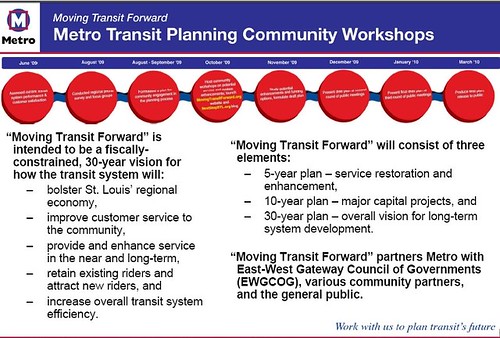Defining service standards down as an indicator of breakdown in metropolitan transit planning
I did a presentation a few years ago at University of Delaware on "Metropolitan Mass Transit Planning: Towards a Hierarchical and Conceptual Framework.

The basic point is that in most metropolitan areas, by default the transit operator is the dominant transportation planner, but instead transportation planners at the Metropolitan Planning Organization (in the DC area, this is the Transportation Policy Board of the Metropolitan Washington Council of Governments) and the local jurisdictions should be setting overarching policies for:
1. Network breadth;
2. Network depth;
3. Levels of service.
I discuss this general point in the blog entry "Without the right transportation planning framework, metropolitan areas are screwed, and that includes the DC area."
This comes up in how WMATA has just redefined level of service definitions for peak and off-peak subway service. See "Metro proposes too low a bar for minimum service levels" and "WMATA Board still shuts out riders on policy issues" from Greater Greater Washington.
GGW makes the point in the latter entry that the process is broken, that riders are shut out of communicating to the board. While that is true, it's a surface analysis of the problem, which is actually much deeper as indicated in the discussion above.
By default, WMATA dominates transit planning in the metropolitan area. Without overarching definitions of the breadth, depth, frequency and quality of service, the transit system's various budget problems are always going to result in a downgrading of definitions (not unlike Moynihan's paper on "defining deviance down") because of the dilemma of satisficing service demands with the budget and revenue projections they have to work with.
What I argue is that a region should define the network(s) and level of service and then contract with service providers to meet those definitions.
If the service provider (WMATA and the other jurisdictional transit services) can't meet the definitional requirements because of budgetary issues, then that needs to be made very clear, rather than constant redefinition, downward, of what is acceptable level of service.

Document from a public planning process for transit service in the wake of significant budget cuts, Portland, Oregon.
Separately, I have made the point that the transit consensus in the region needs to be updated, not just for the 21st century, but because the consensus built for the creation of the system no longer has the same sense of force, because in the past 40+ years, the actors have mostly all changed (the founders died, etc.), the way the states work has changed somewhat, and conditions are different.
WMATA is a bit at sea, because of this.
To reposition and re-center, the consensus needs to be updated and rebuilt.

St. Louis regional transit planning process, slide.
I argued that in "St. Louis regional transit planning process as a model for what needs to be done in the DC Metropolitan region" especially but also "TriMet (Portland): CHALLENGES & CHOICES A Budget Discussion Guide."
The downgrading of definitions of service is another illustration of the reality that the regional transit consensus is broken and it needs to be reconstructed.
Labels: transportation planning



0 Comments:
Post a Comment
<< Home